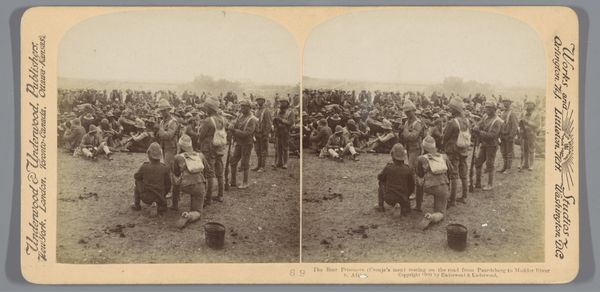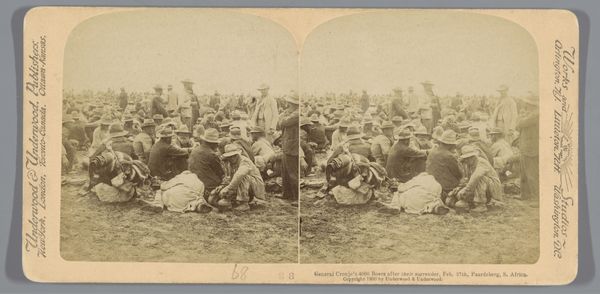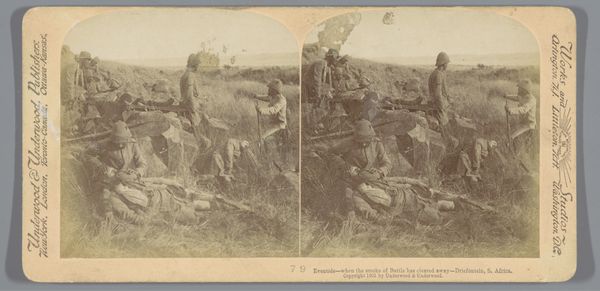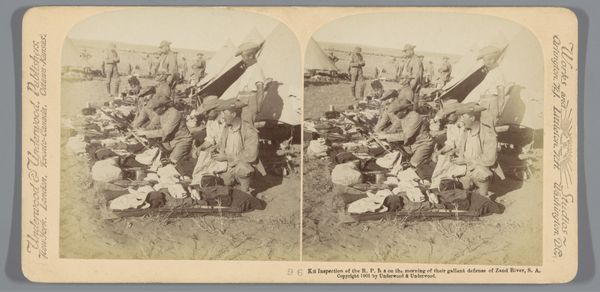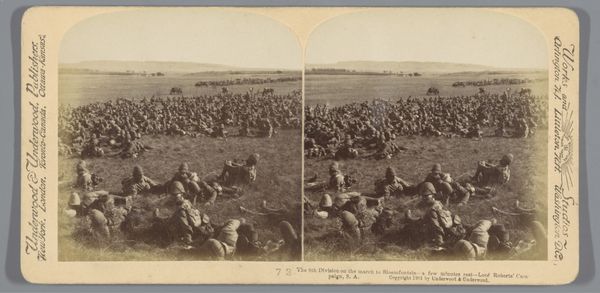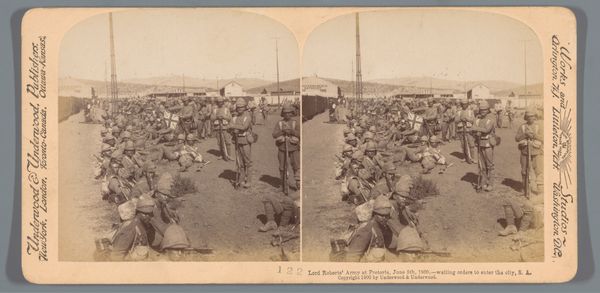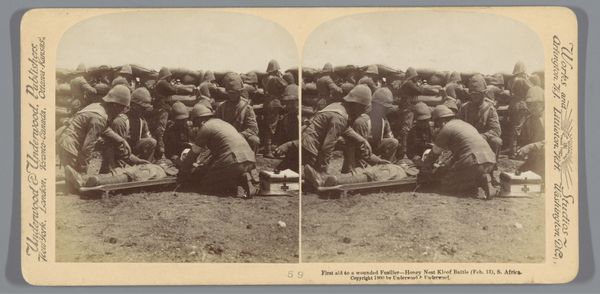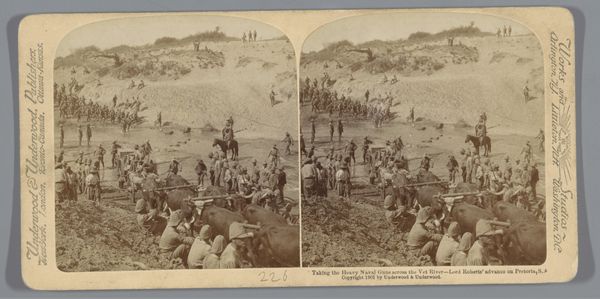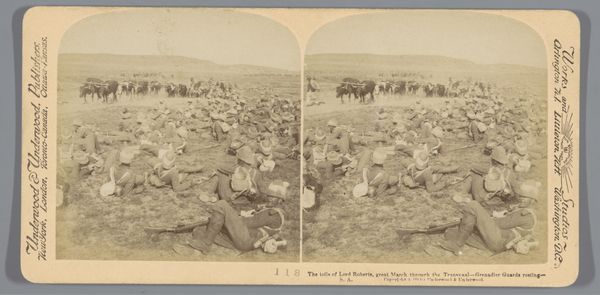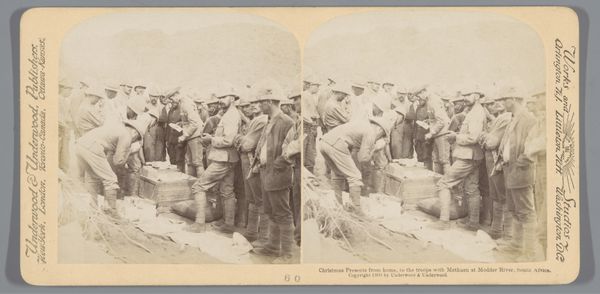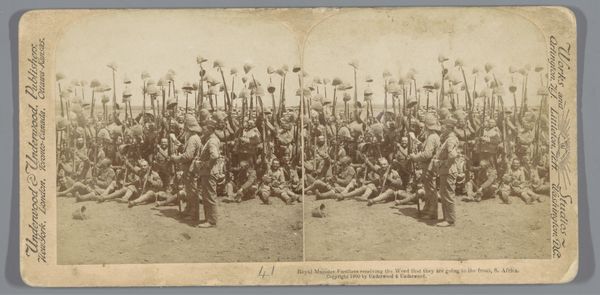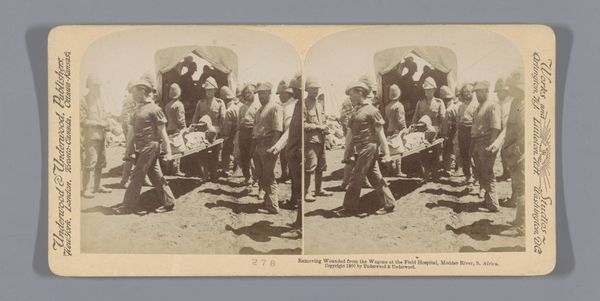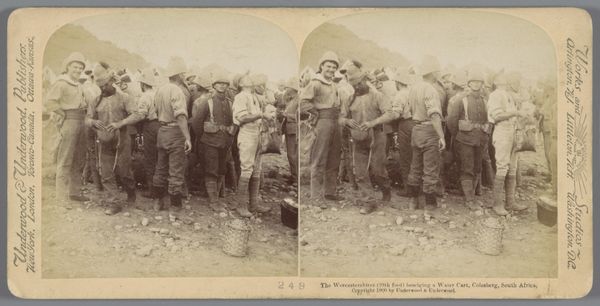
photography, gelatin-silver-print
#
african-art
#
photography
#
group-portraits
#
gelatin-silver-print
#
history-painting
#
realism
Dimensions: height 88 mm, width 178 mm
Copyright: Rijks Museum: Open Domain
Editor: This gelatin silver print from 1900, titled "Militairen in een kamp in Zuid-Afrika," and created by Underwood & Underwood, offers a glimpse into a bygone era. It feels…bleak. A dusty field filled with men. What stands out to you when you look at it? Curator: It certainly has a somber quality. When I look at this image, I'm immediately struck by the sheer ordinariness of it. Not of the war itself, necessarily, but of the *in-between* moments. See how the men are posed, casually washing themselves. I imagine they’re far from home, battling the elements and perhaps their own anxieties, clinging to routines of daily life. Do you think the subdued tones of the gelatin silver print add to the melancholy feel? Editor: Definitely. It makes everything feel muted, distant. It almost romanticizes the hardship, don’t you think? It’s like we're viewing it through a nostalgic lens. Curator: Nostalgia is a tricky thing, isn't it? Perhaps that romanticization is part of the intention, creating a heroic, sanitized vision of soldiers doing their duty in far away territories. This photograph freezes a fleeting moment into an artefact that is full of layered meaning. Editor: It’s also interesting to consider who the intended audience was for this. Back then, did people view these soldiers as heroes, or was there more ambiguity? Curator: Excellent question. Given the period, likely both existed in varying degrees, intertwined, I suspect. Propaganda and dissenting voices often clash, even in less complex media landscapes than we have today. Looking closely reveals complexity within a single frame. What appears ordinary transforms into something extraordinary and perhaps more poignant. Editor: I never thought about how photographs could be both documentary and manipulative at the same time. Now I look at the image, and I keep thinking about how images shape narratives and memories. Curator: And how personal experiences will always reshape dominant narratives. Seeing and reflecting - the basis of critical understanding!
Comments
No comments
Be the first to comment and join the conversation on the ultimate creative platform.
